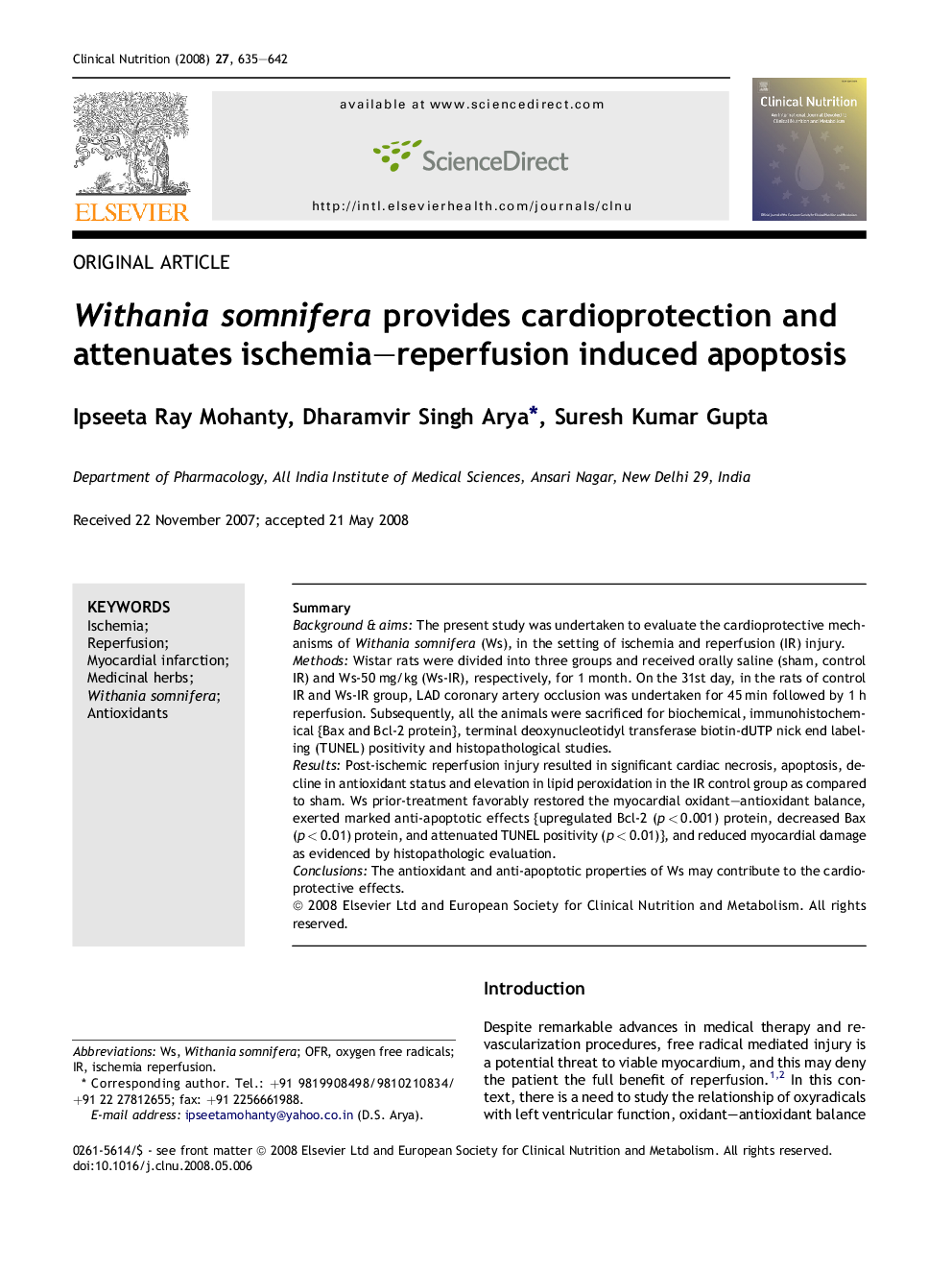| Article ID | Journal | Published Year | Pages | File Type |
|---|---|---|---|---|
| 2687605 | Clinical Nutrition | 2008 | 8 Pages |
SummaryBackground & aimsThe present study was undertaken to evaluate the cardioprotective mechanisms of Withania somnifera (Ws), in the setting of ischemia and reperfusion (IR) injury.MethodsWistar rats were divided into three groups and received orally saline (sham, control IR) and Ws-50 mg/kg (Ws-IR), respectively, for 1 month. On the 31st day, in the rats of control IR and Ws-IR group, LAD coronary artery occlusion was undertaken for 45 min followed by 1 h reperfusion. Subsequently, all the animals were sacrificed for biochemical, immunohistochemical {Bax and Bcl-2 protein}, terminal deoxynucleotidyl transferase biotin-dUTP nick end labeling (TUNEL) positivity and histopathological studies.ResultsPost-ischemic reperfusion injury resulted in significant cardiac necrosis, apoptosis, decline in antioxidant status and elevation in lipid peroxidation in the IR control group as compared to sham. Ws prior-treatment favorably restored the myocardial oxidant–antioxidant balance, exerted marked anti-apoptotic effects {upregulated Bcl-2 (p < 0.001) protein, decreased Bax (p < 0.01) protein, and attenuated TUNEL positivity (p < 0.01)}, and reduced myocardial damage as evidenced by histopathologic evaluation.ConclusionsThe antioxidant and anti-apoptotic properties of Ws may contribute to the cardioprotective effects.
